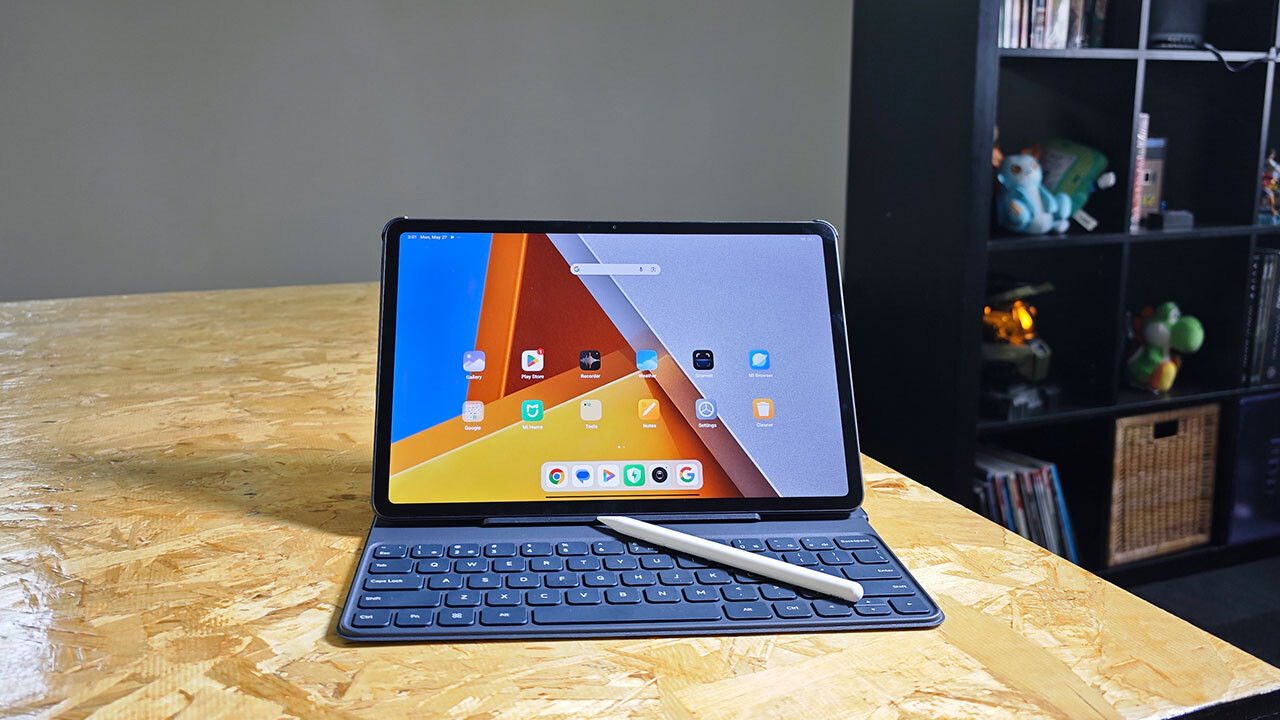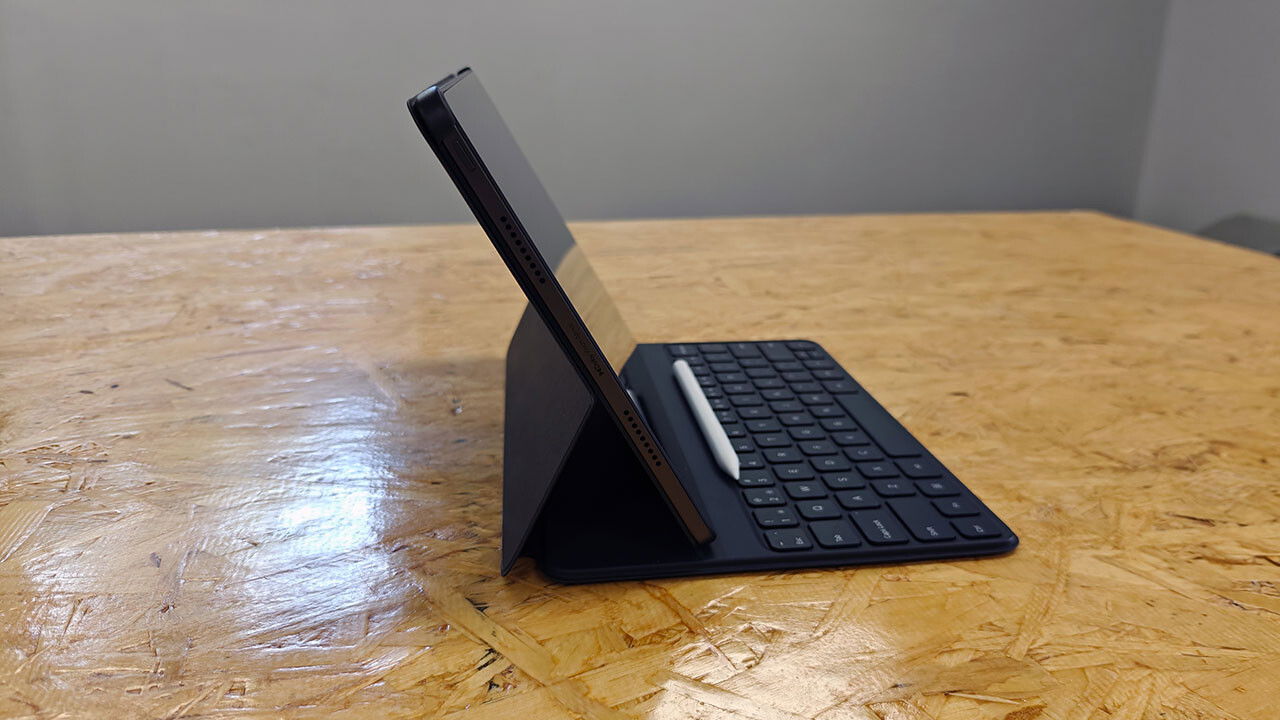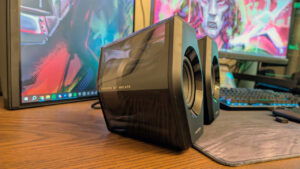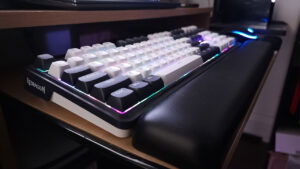Tablets have been a tough game to get into for a lot of manufacturers. Where phone users seem to at least accept the existence of other brands, tablets seem to be, in the eyes of North American consumers, divided into the categories of iPad, Samsung and “other.” POCO, a subsidiary of Xiaomi, is looking to change that with the release of their first tablet, the POCO Pad.
The POCO Pad runs on Android 14 and Xiaomi’s HyperOS. It sports a Qualcomm Snapdragon 7s Gen 2 SoC with an Octa-core CPU and Adreno 710 GPU. It comes with 8GB of RAM with 256GB of storage, but is actually expandable up to 1.5 TB with a Micro SD card. Simply offering expandable storage feels so out of the box now when it was once a standard in Android devices. It’s nice to see not only because you can customize it to your needs but the company doesn’t have to build a number of different models, simplifying their output (and making it all cheaper). That being said, I would have loved to have seen a 16GB version as well.

The POCO Pad’s aluminum frame and back make it a sturdy tablet, as does its Gorilla Glass 3 screen. It has a 12.1-inch screen with a 16:10 aspect ratio and 2560×1600 pixels, an AdaptiveSync refresh rate of up to 120Hz and 600 nits of HBM (High Brightness Mode) brightness, which makes the screen easy to read even in bright conditions. It has 12-bit colour depth with 68.7 billion colours and is Dolby Vision compatible. The sound is great, too, with four speakers and Dolby Atmos support. The POCO Pad even has a 3.5mm headphone jack for wired sound, which is not often found on newer devices.
“With a 12.1-inch screen, 2560×1600 pixels, 120Hz refresh rate, and Dolby Vision compatibility, the POCO Pad’s display is designed to impress.”
Also interesting is their certification from TÜV Rheinland, an independent testing company, who certified the POCO Pad’s display for low blue light, being flicker-free and being circadian friendly, meaning that it’s capable of replicating more natural light, naturally supporting a person’s circadian rhythm.
The camera is underwhelming on paper. The cameras on the front and back are nearly identical with the main camera being 8MP with a 1/4“ sensor with an f/2 aperture with the selfie camera having the same resolution and sensor size with an f/2.8 aperture. Both max out at 1080p/30fps.

It is definitely a less-than-ideal camera setup, but whether or not it matters to you because of your use cases for cameras on a tablet (especially when you likely have a better camera on your more compact, easier-to-use phone) is really up to you. Also missing from the POCO Pad is any kind of cellular data. The only way to connect your tablet to the internet is through their Wi-Fi (Up to Wi-Fi 6).
“The POCO Pad performed well for everyday tasks, including social media, note-taking, and watching YouTube, using less than 15% of the battery in a day.”
The POCO Pad, like its phone lineup, has fantastic battery life. Its 10,000mAh battery (larger than the Samsung Galaxy S9+‘s) can sustain up to 16 hours of video playback and charges at 33W, making for a longer life and quicker charge than most of its competitors.
The POCO Pad performed well for everyday tasks, including checking social media, using the notes app to write and plan content creation, and taking the inevitable breaks to watch YouTube and further distract myself from said writing and planning. I could spend a whole day doing this and not use 15% of the battery.

I did some light gaming on the POCO Pad, and it would not be recommended for heavier games like a Genshin Impact due to its lower RAM and several generations-behind GPU. Your average leisure games, like Candy Crush, Subway Surfers and similar, will run perfectly and, in my humble opinion, are as much as you need on a tablet. I personally find running shooters or anything with more complicated controls than tapping on a screen too much for the larger mobile device.
What’s great about the POCO Pad is its seamless integration with other POCO Devices. Connecting to your POCO Phone, you can use Home Screen + which lets you access everything on your phone, including apps, on the tablet. You can even drag and drop content from your phone onto your tablet instantly. A shared clipboard allows you to copy text from one device and paste it to the other and, using the Notes app, you can insert pictures taken on your phone directly onto documents being created on the tablet. This level of connectivity makes owning the devices as a complete ecosystem very attractive.
“At $329 USD, the POCO Pad offers excellent value with features comparable to more expensive tablets like the Samsung Galaxy Tab S9.”
The POCO Pad also has some great accessories to make it an even more dynamic device. The POCO Pad Cover, which is a simple yet effective cover that doubles as a stand and storage for the next accessory, the POCO Smart Pen, an ultra-low latency stylus that has 4096 levels of pressure sensitivity and 12 hours of writing time. The POCO Smart Pen is wonderfully reactive and provides a smooth writing/drawing experience. Lastly, the POCO Pad Keyboard, their first Bluetooth keyboard for tablets, with 59 hours of continuous use and 760 hours of standby time.

At $329 USD, the POCO Pad goes from a fine tablet to a game changer. It’s cheaper and bigger than the base models of the biggest brands. Compared directly to the Samsung Galaxy Tab S9, it costs less than half of the $699 price tag with the same RAM, double the internal storage and larger screen. All things being fair, Samsung is using a higher-end CPU and GPU and has unquestionably better cameras.
The question when buying the tablet, whether for yourself or for your kids, is whether those upgrades are worth paying twice the price. Unless you are trying to do some more serious gaming or delve into some heavy multimedia productivity, my answer would be no. The POCO Pad is a perfect budget tablet for casual users.
- WIFI Version, NO SIM CARD. GLOBAL VERSION GLOBAL ROM FCC ID: 2AFZZCFBG
- Size: 12.1″, 16:10 aspect ratioResolution: 2560 x 1600 249 ppiMaterial: LCDRefresh rate: 120Hz AdaptiveSync (30/48/50/60/90/120Hz)Brightness: 500 nits (typ);600 nits (HBM)Touch sampling rate: up to 240Hz *240Hz is based on using Redmi Smart PenScreen-to-body ratio:83.6%Contrast ratio: 1500:1Color depth: 12-bit, 68.7 billion colorsDimming: 4096 levels brightness adjustment, DC dimmingDolby VisionAdaptive colorsAdaptive reading modeTÜV Rheinland Low Blue Light (Hardware Solution) CertifiedTÜV Rheinland Flicker Free CertifiedTÜV Rheinland Circadian Friendly CertifiedCorning Gorilla Glass 3






